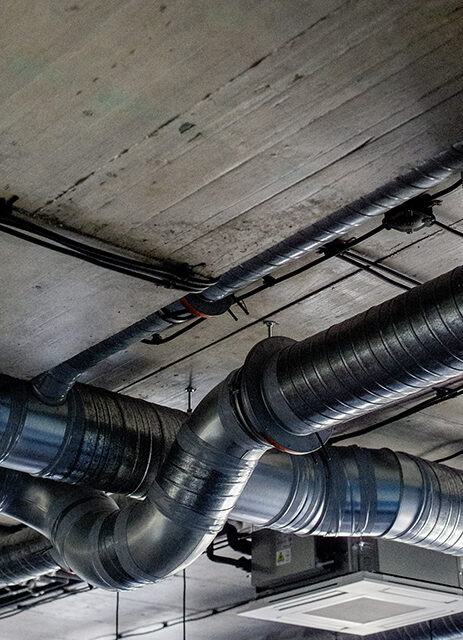Gravitational ventilation is a system necessary in every building and ventilation ducts are its basic element – they should be led to every room.
What are the ventilation ducts made of?
Rigid and flexible ventilation ducts are used in the installations. The former are usually made of galvanized steel. They are the most frequently used in industrial buildings, as they are characterized by high strength and resistance to mechanical factors as well as various environmental factors. They are rarely used in housing investments.
When it comes to the flexible ventilation ducts, they are made of metallised PVC foil. There are needed various types of connectors in ventilation systems so this is where flexible elements are neccessary. They also dominate in terms of easy installation and lower cost.
Types of ventilation ducts
The selection of appropriate ventilation ducts is crucial – they are responsible for the quality of indoor air. The installation plan must comprise factors such as the required capacity, the puropse of the building’s use and the amount of free space.
There are several types of ventilation ducts, as follows:
- Rectangular ventilation ducts, most often made of galvanized sheet. They are distinguished by low height while maintaining high air throughput. They are most often used in the following facilities:
a. industrial,
b. production,
c. service. - Round ventilation ducts, most often made of galvanized sheet. As the most frequently used in housing construction they are characterised by easy assembly. Another variants are channels made of plastic. They are distinguished by a small diameter, which facilitates their installation, e.g. flush-mounted as well as in concrete floor.
- The oval ventilation channels are regarded as a compromise between rectangular and round elements. They are characterized by less use of additional insulation, which increases their air throughput.
- Flexible ventilation ducts, mainly made of PVC foil. They are used in the connection of “rigid” ventilation ducts as an element preventing the transmission of vibrations in the installation or additionally insulated as a noise absorbing connection.
In practice, various types of ventilation ducts are often combined, especially when it comes to rigid and flexible ducts.
